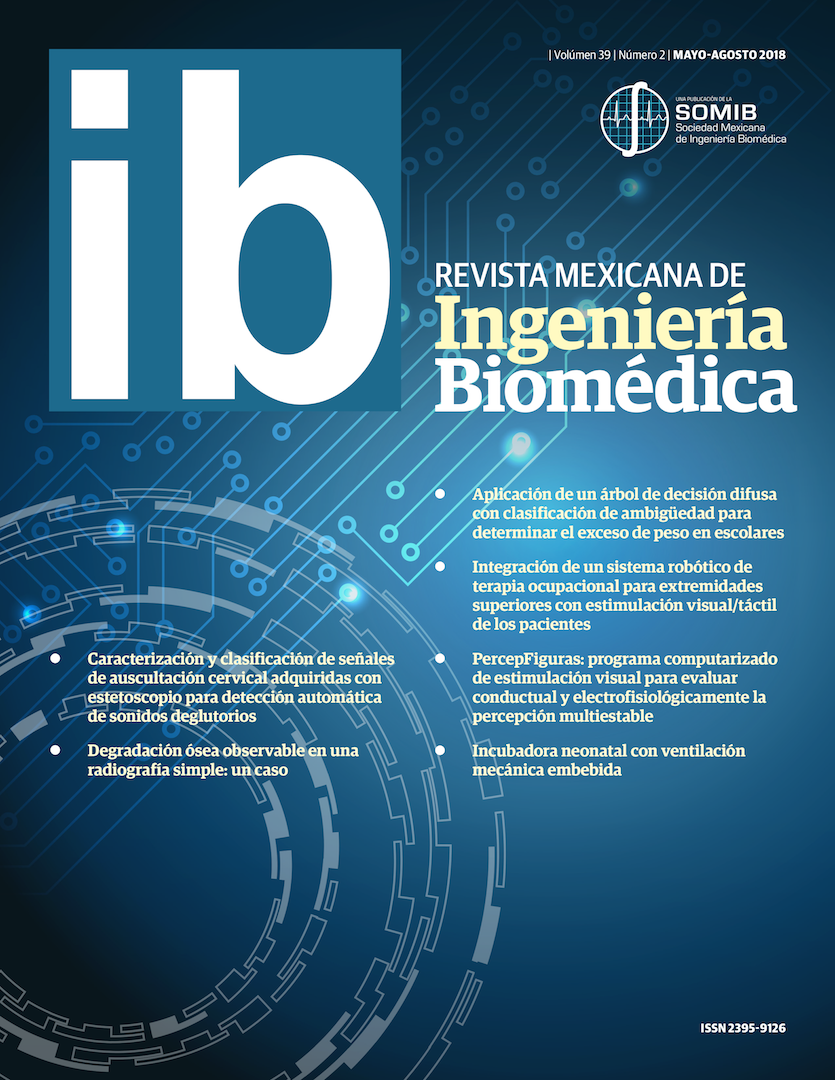Characterization and Classification of Cervical Auscultation Signals Acquired with Stethoscope for Automatic Detection of Swallowing Sound
DOI:
https://doi.org/10.17488/RMIB.39.2.6Keywords:
swallowing, swallowing sounds, cervical auscultation, stethoscope, cepstral analysis, classification algorithmAbstract
Automatic evaluation of cervical auscultation sounds (AC) is a non-invasive tool for swallowing assessment. Howe-ver, the swallowing events could be perturbed by acoustic noise. This paper proposes a methodology of characteri-zation and classification of AC signals acquired by stethoscope with high temporal resolution, in order to discrimi-nate between swallowing sounds and other acoustic noise. AC signals from 10 healthy individuals were acquired with stethoscope during three tasks: liquid ingestion, phoneme /a/ pronunciation and throat clearing. Features ba-sed in Mel frequency cepstral coefficients, discrete wavelet transform and Shannon entropy, were extracted. Fea-tures with highest Fisher’s discriminant ratio were used as input of a support vector machine. By application of 60 ms windows and cross validation, the obtained accuracies were 97.7% for acoustic event detection and 91.7% for swallowing sound detection. The proposed method allows classification swallowing sounds with higher temporal reso lution than other works but with comparable accuracy. Furthermore, the use of stethoscope could lead to bet-ter acceptation than other sensors by physicians, because it is a common device in clinical practice. This work is a first stage in the development of a robust classification algorithm for sounds in swallowing disorders, oriented to automatic diagnosis.
Downloads
Downloads
Published
How to Cite
Issue
Section
License

This work is licensed under a Creative Commons Attribution-NonCommercial 4.0 International License.
Upon acceptance of an article in the RMIB, corresponding authors will be asked to fulfill and sign the copyright and the journal publishing agreement, which will allow the RMIB authorization to publish this document in any media without limitations and without any cost. Authors may reuse parts of the paper in other documents and reproduce part or all of it for their personal use as long as a bibliographic reference is made to the RMIB. However written permission of the Publisher is required for resale or distribution outside the corresponding author institution and for all other derivative works, including compilations and translations.








